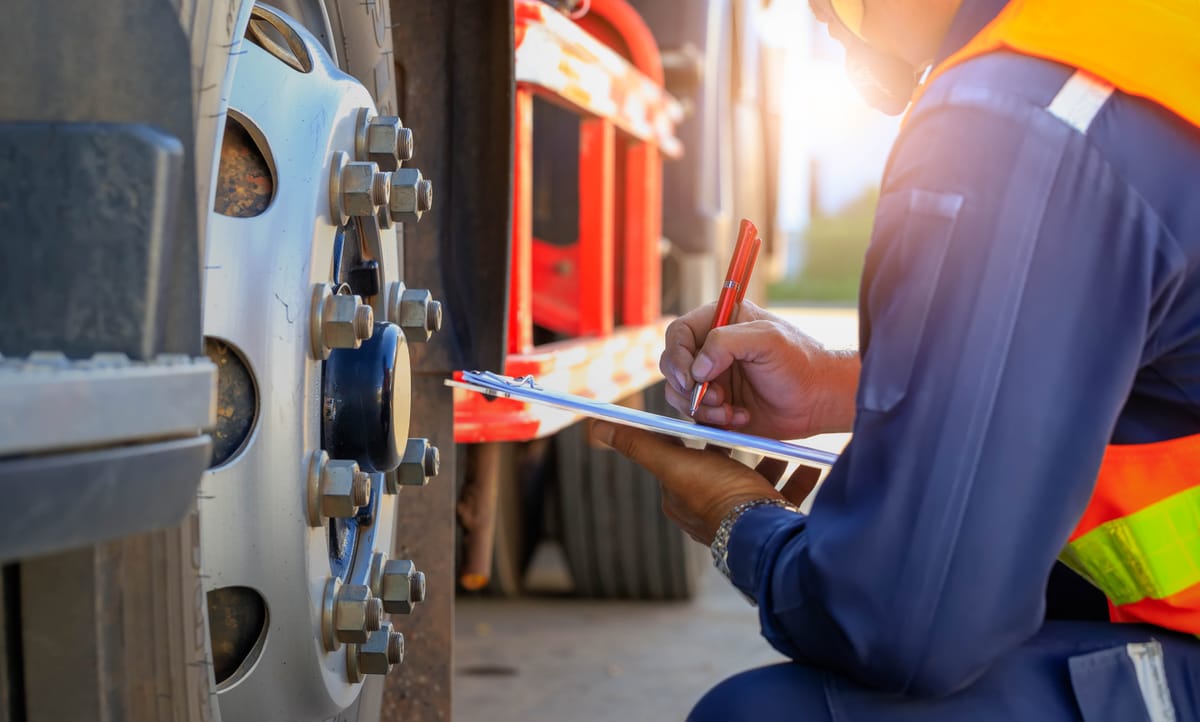An exciting future for fleet safety
Marcus Newbury talks fleet safety and tech

A version of this story first appeared in The Inside Lane newsletter. To get it in your inbox twice a week, sign up for free, here.
By Shefali Kapadia | The Inside Lane
Fleets big and small put safety at the top of their priority lists, but the investments and resources needed to acquire the latest safety tech can sometimes present a financial burden to small businesses.
The good news is, there's a trend toward embedded safety tech, rather than having to make expensive aftermarket purchases. We caught up with Marcus Newbury, COO and co-founder of Driver Technologies, to hear more about what's going well in fleet safety tech, and where there's room for improvement. -Shefali Kapadia
What are the biggest safety lapses you typically see with truck drivers of small fleets or owner-operators?
Smaller fleets tend to underinvest in safety due to budget constraints, a belief that fewer vehicles mean lower risk or an informal approach to operations. Safety risks don’t scale linearly. Every fleet driver should go through the same type of training and have the same access to safety tools in their vehicle. It’s important to be cognizant of the need for safety training and technology, regardless of how many vehicles are in the fleet.
What are some areas where fleets have made big strides in improving safety?
Fleets are implementing aftermarket cameras and telematics devices to improve coaching and awareness of what's happening on the road. They are increasingly becoming part of the connected car ecosystem, especially as newer fleets are equipped with connected capabilities. Some companies, like ours, are beginning to offer fleet management solutions that include an Android Automotive integration, which is embedded directly into the vehicle instead of purchasing aftermarket solutions.
What excites you about trucking technology today?
The embedded nature of the technology within the trucking industry is incredibly exciting because aftermarket hardware is expensive and can be challenging to install. In a fleet, there are different vehicle ownership and usage scenarios. Some vehicles have multiple drivers, some are owned by individual drivers and others are company-owned. This situation requires a flexible approach, such as allowing drivers to use a phone app, installing dedicated devices or switching profiles based on who is driving. Implementing embedded third-party apps is game-changing, whether it brings ADAS functionality to consumer vehicles or trucks, fleet management tools or embeds dash cam solutions.
How can small trucking businesses adopt safety tech in a cost-effective way?
There’s a plethora of aftermarket tools that can immediately help small trucking businesses with safety in a cost-effective way. Small trucking businesses can adopt safety tech by using Android Automotive OS (AAOS) and third-party apps that can decrease the price of accessing your own driver data such as telematics. In turn, proving that good driving behavior through data could lead to lower insurance premiums.
Beyond these primary benefits, third-party platforms could offer additional rewards for drivers based on driving behavior, such as discounts on gas or other perks related to driving habits and the time of driving. These incentives would provide added value for drivers who participate in data-sharing programs.
Thanks for reading The Inside Lane! You can reach the newsletter team at editor@theinsidelane.co. We enjoy hearing from you.
Would you like to be featured in an upcoming edition? Shoot us an email.
Interested in advertising? Email us at newslettersales@mvfglobal.com
The Inside Lane is curated and written by Shefali Kapadia and edited by Bianca Prieto.





Comments ()